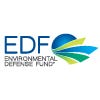These 3 trends could enable cities across America to reduce air pollution
This article is by Maia Draper, Air Pollution Policy Project Manager, Environmental Health at Environmental Defense Fund
In recent years — and especially in recent months, cities have emerged as leaders in global efforts to reduce greenhouse gas emissions and protect public health. One of the most effective ways to accomplish both of these goals is to focus on reducing air pollution — and there’s an unexpected frontrunner doing just that, while also providing a roadmap for other city leaders on how to get started: Houston.
The city has a lot working against it when it comes to air quality: as a petrochemical hub, it’s home to more than 450 industrial facilities, and emissions from the marine and transportation sector in this sprawling port city are also major contributors to poor air quality. But Houston is also taking significant steps in the right direction: its mayor, Sylvester Turner, has publicly supported action on climate and clean air, and it’s using innovative mobile sensing technologies to collect unprecedented levels of air pollution data. Mayor Turner has also championed clean transportation policies that cities can implement today to reduce climate emissions from cars and trucks and improve air quality.
As these efforts expand across Houston and beyond, here are three emerging trends that could help other city leaders get started in measuring — and then addressing — pollution in their own backyards.
New technologies are changing the playing field — and the cost of monitoring
Health-harming air pollution in cities is not distributed evenly, and it’s often a city’s most socioeconomically disadvantaged citizens who are exposed to higher levels of air pollution. In fact, recent research used high-end mobile sensors to reveal that air pollution can vary on a block-to-block level.
However, air pollution data in Houston — as in cities across the U.S. and around the world — has generally been limited to data from just a handful of fixed-site monitors across a more than 600 square mile area, due to the high cost of monitoring. This lack of empirical air pollution data at a hyperlocal level has made it difficult for city leaders to incorporate local air pollution and associated health concerns into city policy discussions.
But this situation is rapidly changing, thanks to an exponential growth in air quality sensing technology and data analysis tools. These innovations are lowering the price point for cities, companies and the public to collect air quality data — which is an essential first step towards actually tackling pollution.
Cities already have a key ingredient for accelerating air pollution monitoring
Another key step in measuring air pollution at a block-by-block level is to ensure that air quality sensors are deployed throughout or used to measure all corners of a city. One easy way for cities to dramatically increase coverage of an urban area is to attach these sensors onto vehicles that already drive throughout an entire municipality: city fleets.
In Houston, Environmental Defense Fund (EDF) is working with the City of Houston, TDE Technologies, and telematics company Geotab to implement a “smart fleet” pilot that is testing a cost-effective, scalable model for mapping air pollution using municipal vehicles. Air monitoring units mounted on Houston Health Department vehicles collect and transmit data in real time, accessible via an online data portal. Vehicles drive as they normally would, consistent with an EDF and Geotab analysis of over one million connected vehicles which indicates that many North American cities could map up to 80 percent of a city with just 20 vehicles — without altering their normal routes.
Data from the pilot are now being analyzed, and EDF and Houston are already using the data to identify air pollution hotspots.
The sky is the limit for utilizing hyperlocal air pollution data
With access to air quality information at a neighborhood level, cities could design targeted policies to address pollution sources and limit their citizens’ exposure to air pollution, while also achieving other priority municipal goals — such as modernizing city transportation, infrastructure and land use, updating public housing for greater equity, or promoting electric vehicle adoption. Understanding how these policies impact air quality over time will also enable cities to understand what works and doesn’t work, and make changes accordingly.
In Houston, EDF and the city’s health department will use hyperlocal air pollution data to develop a tool for identifying areas with persistently high air pollution measurements for targeted enforcement of existing pollution policies — like the city’s idling ordinance and pollution permit limits for industrial facilities — and design of new ones.
Here are some other ways that air pollution data can inform city planning and more:
Transportation planning & traffic congestion mitigation: Design transportation projects and traffic congestion mitigation efforts to provide air quality benefits (such as from public transit, electric vehicle purchases or reductions in truck traffic) where they are most needed.
Targeted enforcement & design of air pollution rules: Prioritize deployment of enforcement resources to “hotspot” areas identified through air pollution monitoring, and/ or use these data to design new policies (such as facility permitting, land use or idling ordinances) that better target the most polluted areas and protect vulnerable groups in these areas.
Emergency public health interventions: Optimize deployment of emergency response resources by understanding increased air pollution related demand for emergency services in certain areas at specific times — for example, in response to wildfire smoke or an ozone action day.
The “Smart Fleet” pilot in Houston is giving city leaders a road map for how to collect and leverage hyperlocal air pollution data to reduce emissions and protect health on a global scale. Now it’s up to Houston and other pioneering cities to lead us along that road to a healthier, more equitable, more sustainable future.
We are entering a new era of environmental innovation that is driving better alignment between technology and environmental goals — and results. #FourthWave
